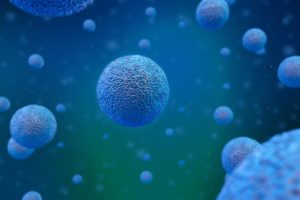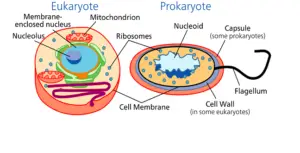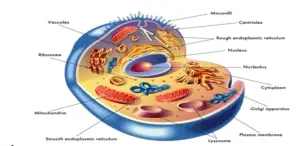What is a Cell?

A cell is a living thing’s littlest organ. A living being is called an organism because it’s made of one cell (like bacteria) or several cells (like a human one).
Cells are thus the basic building blocks of all species. Several cells of one kind that interconnect with each other and perform a common function form tissues; several tissues combine to form an organ (your stomach, heart, or brain); and multiple organs make up an organ system (such as the digestive system, circulatory system, or nervous system).
Many systems that work together make up an organism (like a human being). There are several cell types all grouped in one of two broad categories: prokaryotic and eukaryotic
Your body has several kinds of cells, every one developed for a specific function.
Much as a home is made of a variety of building materials, so the human body is made of several types of cells.
For example, epithelial cells protect the body’s surface and cover the cavities of the organs and body within.
Bone cells assist in sustaining and protecting the body. Immune system cells battle off invading bacteria. Also, blood and blood cells carry nutrients and oxygen throughout the body while the carbon dioxide is removed.
Growing of these types of cells plays a vital role during the body’s growth, development, and daily care.
Nasal sinus cells (lit microscope viewed), Onion cells (lit microscope view), and Vibrio tasmaniensis bacterial cells (seen through a scanning electron microscope) come from very different species, and they all share certain specific cell structure characteristics.
Read also: A level Biology (9700)
Types of Cells:

Difference Between Eukaryote and Prokaryote
The differentiation between prokaryote and eukaryote structure is so large that the gap between classes of species is considered the most important one.
⦁ The key difference is that eukaryotes contain the “true” nuclei that contain their DNA, whereas in prokaryotes the genetic material is not membrane-bound.
⦁ Typical Gram-positive cell structure and material (a prokaryotic cell) Structures and contents.
⦁ In eukaryotes, mitochondria, chloroplasts, and other endosymbiotic bacteria are known to derive in different metabolic processes. Similar processes occur in prokaryotes throughout the cell membrane and are extremely rare.
⦁ The cell walls of the prokaryotes usually consist of a molecule other than the eukaryotes (many eukaryotes are not at all cell walls).
⦁ Usually, prokaryotes are much smaller than eukaryotic cells.
⦁ Prokaryotes differ also from eukaryotes because they contain only a single loop of stable chromo-DNA in a nuclear area while eukaryote DNA is located on very tight and organized chromosomes. They are also different from eukaryotes. Whilst certain eukaryotes are formed with satellite DNA, called plasmids they are commonly considered to be prokaryotic and many essential genes are contained in plasmids in prokaryotes.
⦁ Prokaryotes have a greater area by length, supplying them with a higher degree of metabolic, a faster rate of growth, and thus a shorter generation than Eukaryotes.
Read also: IGSCE Biology (0620)
Cell Theory
In 1665, when viewing cork tissue through a lens, Robert Hooke coined the term “cell” for the box-like structures he observed. Antony van Leeuwenhoek had discovered bacteria and protozoa in the 1670s.
Later improvements in lenses, design of microscopes, and staining techniques enabled many scientists to see components within cells.
The unified cell theory notes that: all living organisms are made up of one or more cells; the cell is the fundamental unit of life; and from existing cells, new cells emerge. Rudolf Virchow said famously, “Omnis cellula e cellula.”.
All cells come from pre-existing cells only. The portions of modern Cell Theory generally accepted are as follows:
⦁ In living life, the cell is the basic unit of body and functionality.
⦁ Both organisms are composed of one cell or more.
⦁ Cells are formed through cell division from other cells.
The extended cell theory edition may include as well:
⦁ During cell division, cells bear genetic material transferred to daughter cells.
⦁ In chemical composition, all cells are the same.

The transfer of energy (metabolism and biochemistry) takes place inside cells.
Cell Size
Both cells, whether prokaryotic or eukaryotic, need to have a small scale. When a cell increases in size it reduces its surface-to-volume ratio. If the cell has the form of a triangle, the same definition would apply.
If the cell expands too wide, there won’t be enough surface area for the plasma membrane to accommodate the diffusion rate needed for the increased volume. In other words, it becomes less efficient as a cell grows as it grows.
They are evolving increasingly complex cells, such as the increasingly advanced cells called Yukari cells, which have different organs for particular activities. Larger species require different organs (lungs, kidneys, and so on).
The friction and fluid dynamics are relatively much more important for small organisms with their high surface area to volume ratio.
Reduced area of the surface can cause both issues and decreased surface area. In adverse conditions, elevated surface areas pose temperature regulation issues. The gravity is much less important for large animals than for small species.

